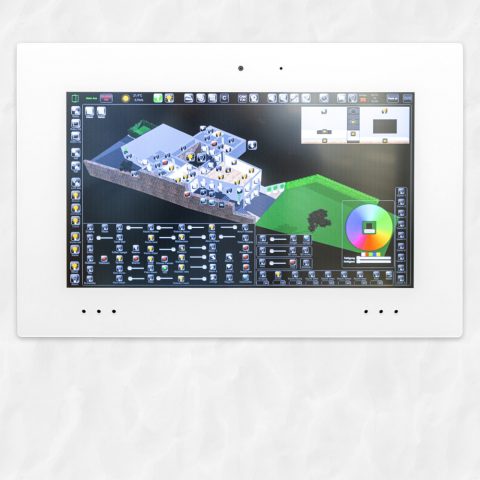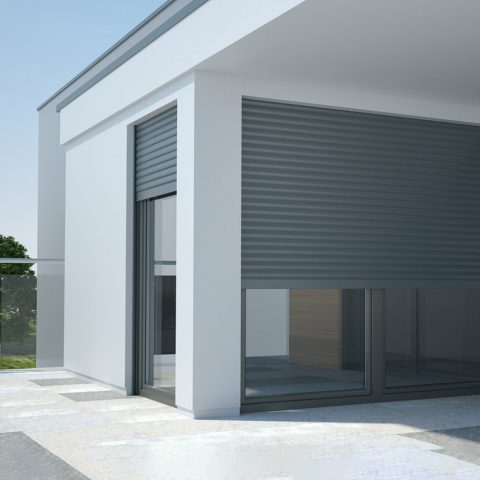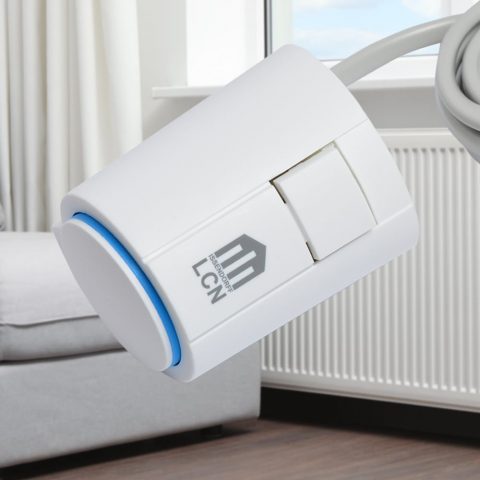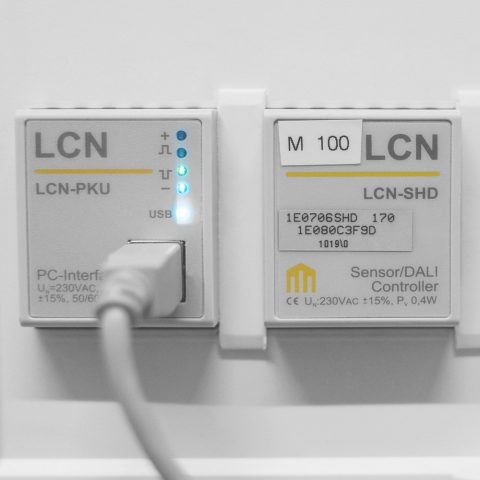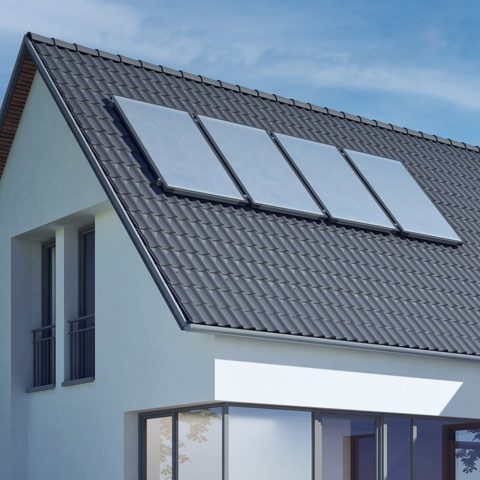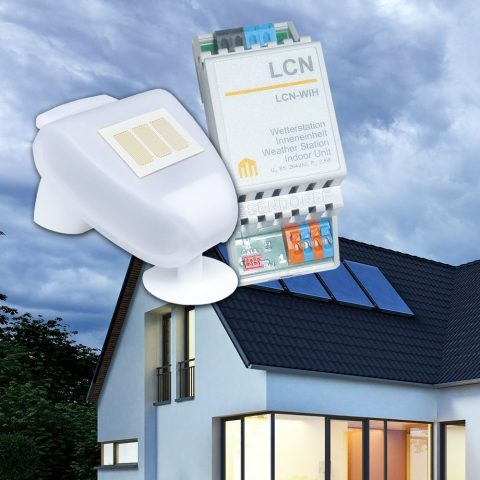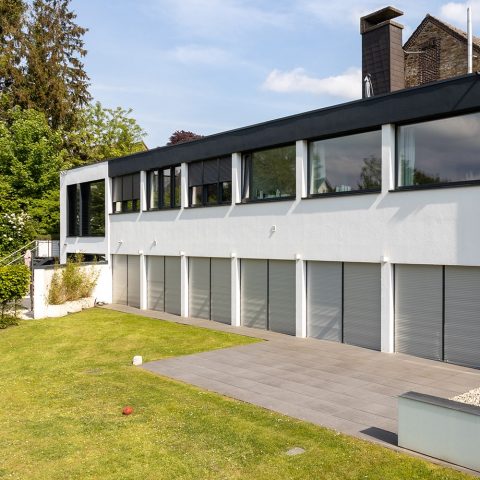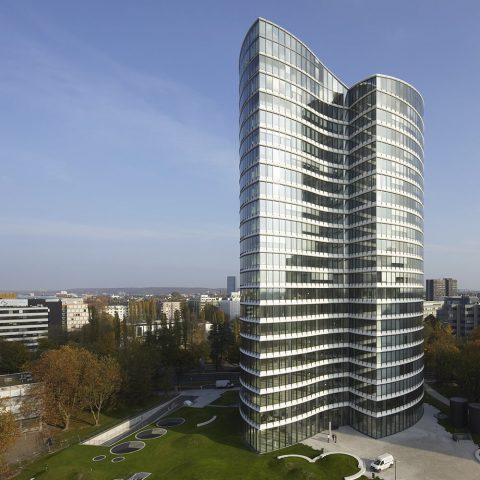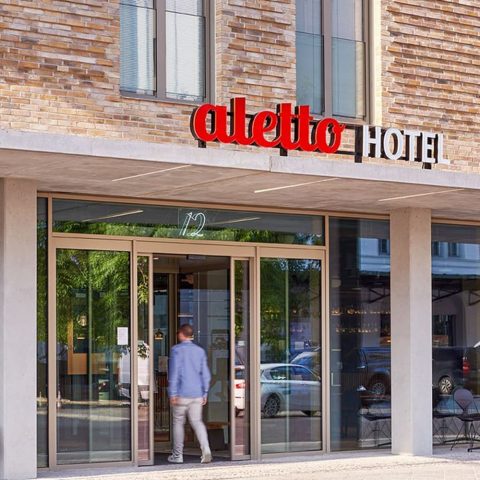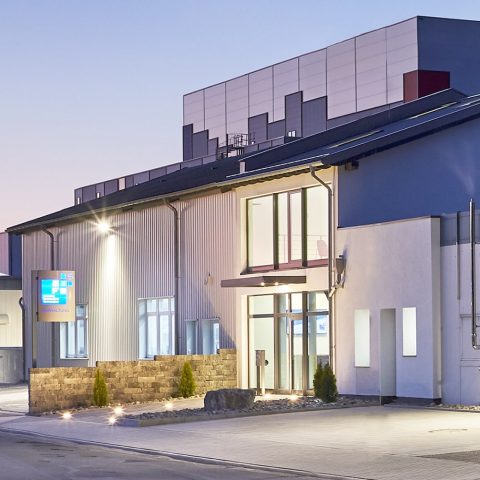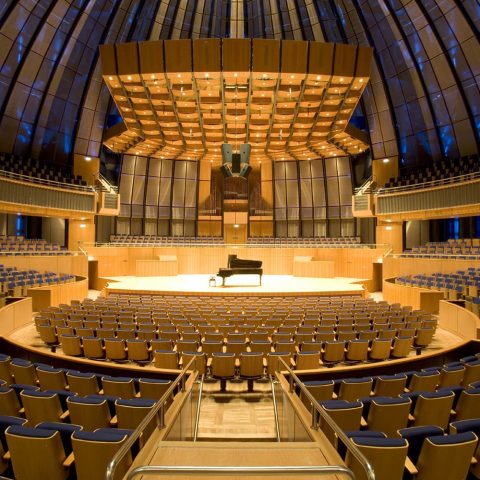Building automation in perfection
LCN is building automation with low installation effort but high benefit.
From “simple” light switching to complete home automation, LCN offers excellent solutions in all areas. The open bus system can be coupled with systems from other manufacturers, so that you have almost free hand, for example, in the choice of roller shutters.
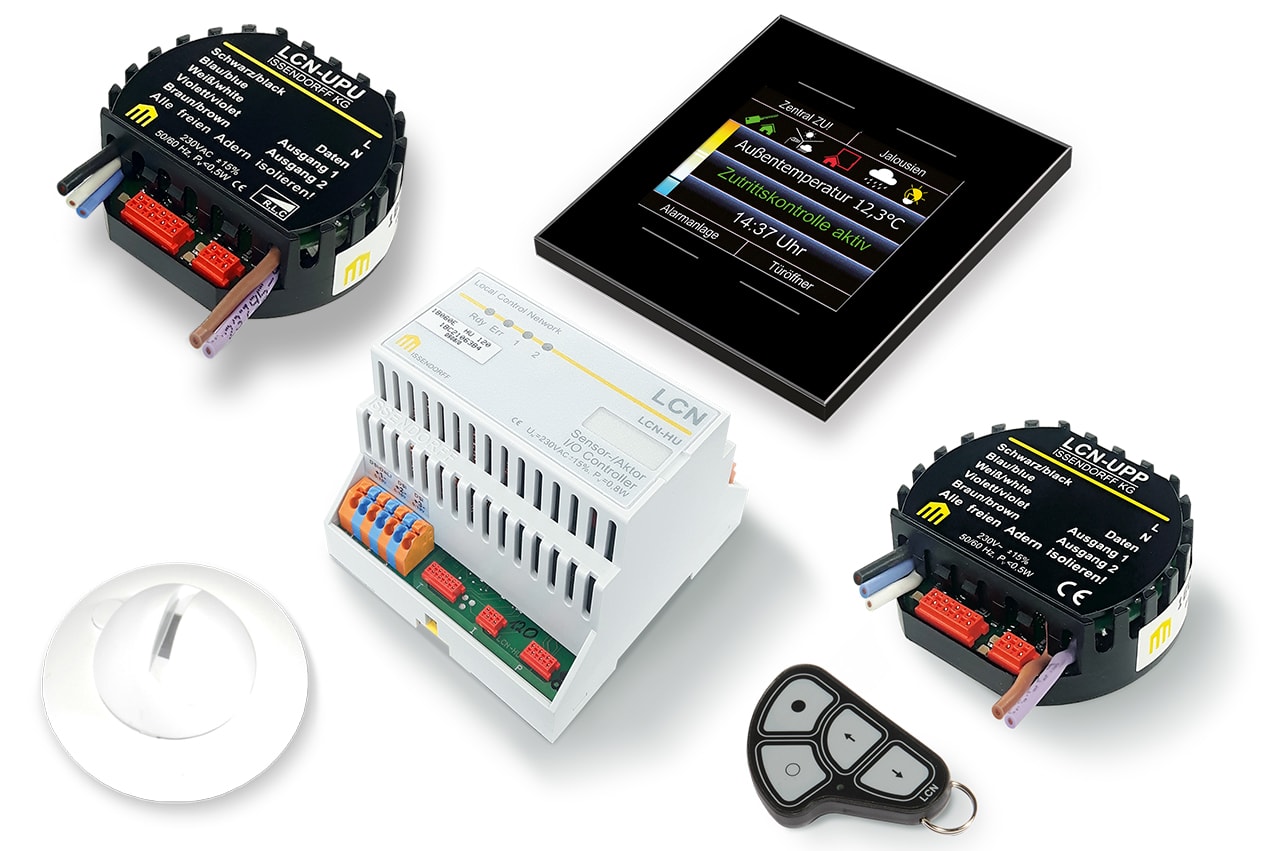
LCN bus system
LCN offers you a wide range of advantages!
LCN is particularly easy to install, as it does not require its own cable network. Only one free wire in the existing house installation. The parameterization is very simple, even an employee who only occasionally uses the bus technology would be able to handle it. And because the software helps in many places, even with troubleshooting, LCN saves time and money on the job site. The system can be easily read out at the push of a button.
Perfect
One of the most powerful buses in the world
With 1,000 - 10,000 telegrams in the upper bus level and 100 telegrams in the lower bus level, LCN's transmission performance is at the top in a worldwide comparison of installation buses.
Qualitative
Comprehensive monitoring
LCN is the only system with a 4-level receipt and reporting system. This enables complete monitoring of all statuses and processes - even in very large buildings. On top of that, operational messages help the installer to get the job done quickly and cost-effectively.
Progressive
LCN does not require an extra line network
No additional changes or modifications to the existing electrical installation are necessary for the installation of the LCN system. LCN simply uses a free wire in the existing installation. This saves work, costs and additional effort.
Comprehensive
LCN is completely backward readable
Even after many years, an LCN system can be easily expanded or maintained - even if the project file is no longer available. Because the entire parameterization incl. Comments is in the attachment: the project file can be fully restored in minutes.
Economical
LCN offers a favorable entry
The ability to easily install the system into an existing infrastructure makes LCN more affordable than other systems. Further aspects for an excellent price/performance ratio are the simple, cost-effective maintenance as well as the multifunctionality and interference immunity of the modules.
Functional
LCN offers a huge range of functions
LCN offers an unmatched number of functions per module. From lighting and shutter control to access control. With 2 controllers and 4×4 thresholds per module, fed from 12 measured values, LCN also offers superior functionality in climate control.
Flexible
Function extension through couplings
As an "open bus", LCN allows problem-free coupling to almost all systems (e.g. BACnet, Modbus, OPC, BMA Bosch, IOS, IP-Symcon,Tobit, EnOcean, etc.) via various interfaces.
Because a coupling is not only a function extension, it is also always an enrichment of both systems.
Networked
Worldwide building control with LCN-GVS
The LCN-GVS visualization system enables worldwide control over all statuses and functional values of a building. The software is simply installed on a central Windows PC and can be operated with any browser-enabled device (smartphone, PC, tablet, etc.). At any time. Worldwide.
Easy
Parameterization without databases and applications
LCN is easy to parameterize. Clear installation and function software offer an understandable handling of the system. Individual projects can be saved in a template pool and reused in any LCN system at any time by "drag & drop". LCN-PRO "knows" all LCN modules from year of manufacture 1996 and offers the installer only the functions that the modules are capable of: A simple, uniform tool for all buildings!
Helpful
Latest technologies and first-class support
You still have questions or need more information? Or are you planning a smart home and facing decisions? Support is our great strength, so you can enjoy the smart home you want. Tell us what we can help you with and you will get exactly the right contact.
We would also be happy to assist you with your individual building planning.
Do you have any questions about LCN planning?
Our experts are there for you!
Phone: 05066 99 88 55
or just write us!
The LCN bus system
No extra control line needed. All that is required is a free wire in a standard sheathed cable. Therefore, 4- or 5-core NYM is suitable for use.
The modules from our company, are of course the heart of the LCN bus. Are virtually the brain of the whole system. Modules can be installed both in flush-mounted boxes and directly in the distribution – as DIN rail modules.
A self-contained construct of modules, cables and sensors is called a segment. For larger construction projects, several LCN segments can be connected via segment couplers. This increases the maximum cable length, several buildings or parts of buildings can be connected and the maximum number of modules that can be used is increased.
There are 2 different types of modules. Bus modules and sensor bus modules. Bus modules form the basis of the LCN system. The built-in microprocessor takes over the interrogation of sensors, the control of actuators and manages the communication with other bus participants.
Sensor bus modules are primarily used to integrate sensors into the LCN bus. These can be motion detectors or temperature sensors, for example.
The modules are available in 2 designs. As DIN rail module for distribution or as flush-mounted module for use in a switch box. This allows centralized, local and mixed circuits to be implemented.
Kern des Moduls ist natürlich sein Mikroprozessor. Here, all settings are permanently written to the configuration memory. The memory is non-volatile, so the data is retained even in the event of a power loss.
There are 3 connection variants for extensions. T-, I- and P-port. Here “T” stands for keyboard, “P” for peripheral and “I” for input. The abbreviated letters therefore already indicate roughly what can be connected to these modules.
• T-port
For connection of conventional pushbuttons, pushbuttons of the LCN-GT series or also for KNX standard pushbuttons
• I-port
For (parallel) connection of sensors. These can be, for example, temperature sensors, infrared remote control receivers also LCN glass infomodules. The maximum length of the cable at the I-connector is 50m. The cable used for the extension is a standard telecommunication cable.
• P-port
The P-connection is only available on the bus modules for DIN rail mounting. The P-connector is used to connect relays and binary sensors. Thus, up to 8 outputs with 16A load can be controlled. Binary sensors are used to connect potential-free contacts, such as reed contacts, third-party motion detectors, etc.
The LCN-HU and LCN-DDR modules also provide control outputs for connecting and controlling DALI and 0-10V ballasts. Control outputs can also be found on the new LCN-DMXH module. This module connects the LCN bus with the DMX512A interface and is primarily used to control LED RGBW luminaires.
The modules work completely independently and do not require a special supply line. The only requirement is a connection to the data wire and that the module is assigned an address. The communication runs via telegrams. If a telegram is sent to a module – e.g. because a light is to be switched on – it reaches every bus station, but is only processed by the module that has the correct address.
LCN can be used flexibly. Whether it’s a one-room apartment or a 60-story skyscraper. LCN is the world leader in bus performance, outperforming systems by 3 to 30 times. This makes it possible to send or receive up to 10,000 telegrams per second. LCN is not only fast, but also extremely precise thanks to the four-stage reporting and acknowledgement system.
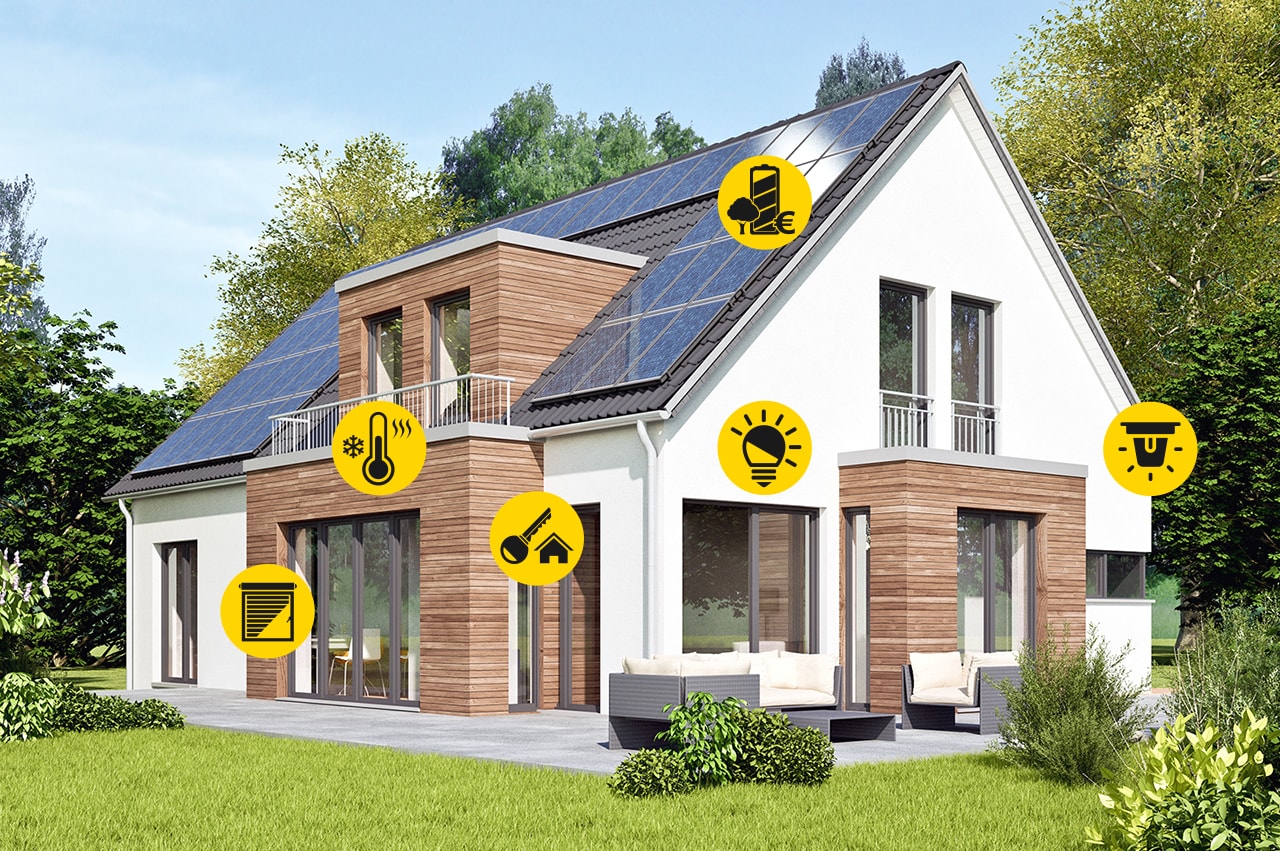
Among others, the following functions can be realized with LCN:
- Energy saving through temperature control
- Control interior lighting depending on exterior light
- Save and recall light scenes
- Solar control system: automatically control blinds/shutters, etc.
- Execute controls time-dependently
- Time recording system, access control
- room control
- Process and display alarm messages according to DIN
- All functions can be reprogrammed at any time
- And many more functions...
LCN projects
That's how easy it is to install the Local Control Network:
In the conventional installation network, LCN requires only one additional wire in the normal house installation for data transmission. Because LCN complies with VDE regulations, it is easy to handle and at the same time particularly immune to interference. Without additional piping network, the cost of installation remains extremely low. Every building – large and small – benefits from this.
The LCN bus system is characterized by straightforward technology and the simplest installation. It is based on intelligent bus modules equipped with a powerful microprocessor. They not only handle data communication, but also control, regulate, calculate and monitor all functions within a building, regardless of whether they are executed automatically or requested by the user. A central processing unit is not required.
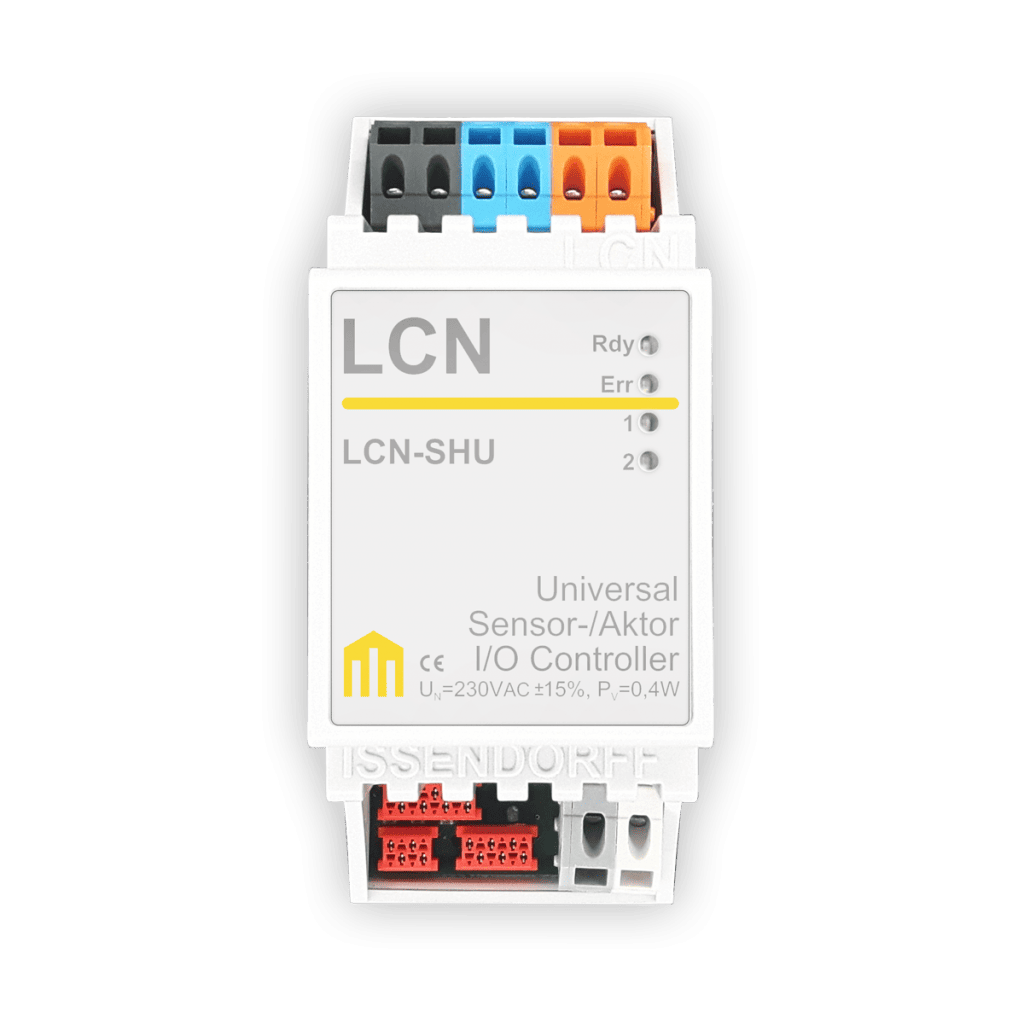
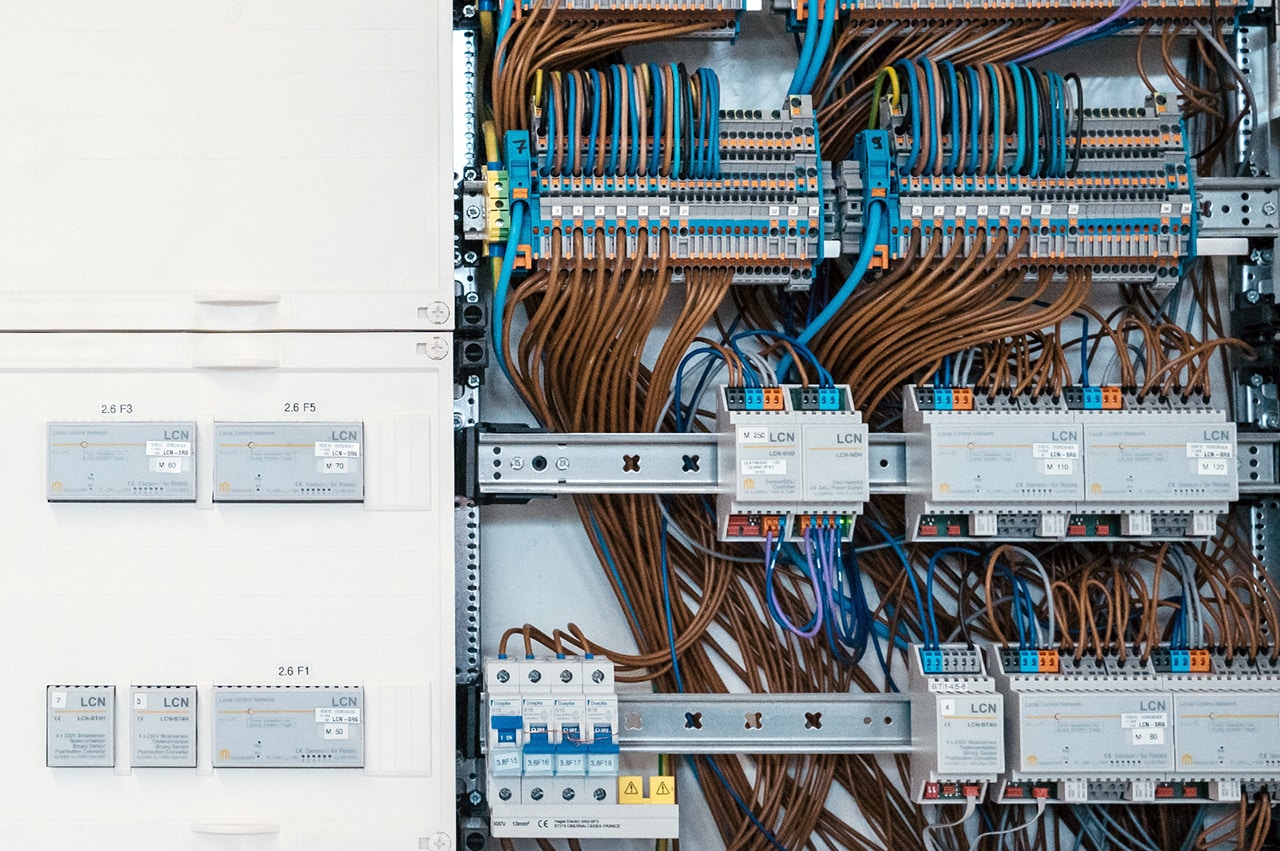
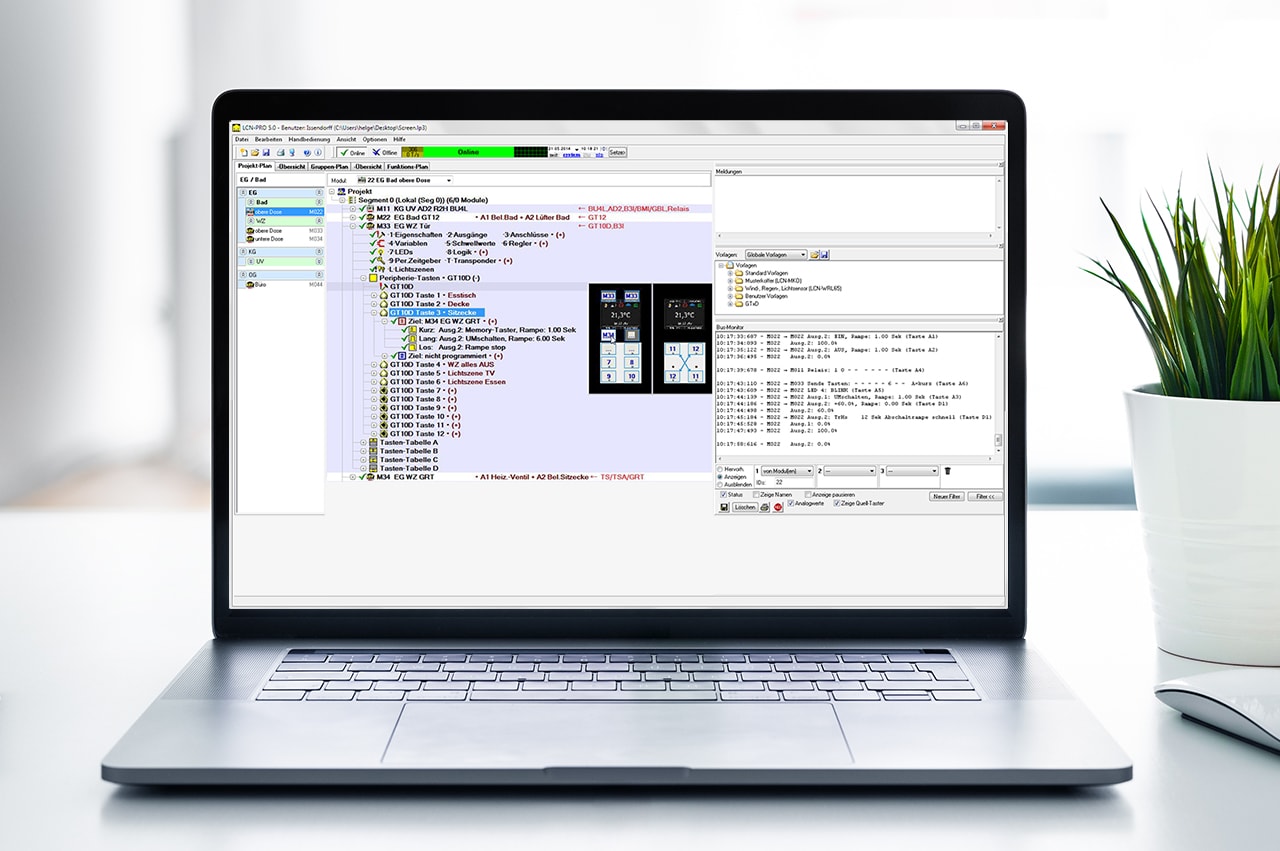
An Intelligent System
The LCN modules are installed between mains voltage cables and electrical consumers such as lighting or motors for blinds or shutters. Sensors for automatic data acquisition, such as motion detectors, window contacts or temperature sensors, are connected directly to the modules. This also includes buttons and remote control receivers that allow the user to trigger the desired functions.
The bus modules are set up with the LCN-PRO parameterization software. This parameterization can even be done in the installer’s office before the installation, so that after the installation is completed, the programming can be transferred immediately.
No separate data line necessary
Does not require additional power supplies
Can be extended and retrofitted as required
Uses standard pushbuttons or glass keypads
Sensor and actuator functions in one module
Prametrization completely readable
Smart Home ready
A project can be made LCN-capable by taking simple measures that involve only a small amount of additional work during installation:
Line network
A free core in the conventional low-voltage line (e.g. NYM) is required. No second line network is required!
Installation material
Only deep boxes or electronic boxes are used at the planned switching points.
Distribution
LCN can be planned or installed in such a way that the desired functions of the building are taken over before decentralized modules. This variant of planning and installation provides for almost no space requirement in distributions and thus saves not only time but also money. Since in individual cases costs can be saved with some modules on the top-hat rail, it is nevertheless sensible to provide two to three rows of reserve.
Installation
Standard NYM cable is laid, standard five-core cable is optimal so that one core remains as a reserve.
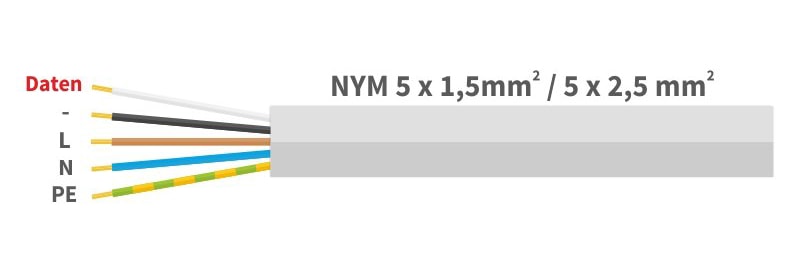
port
The bus modules are connected directly to the house network, without external power supplies and chokes. Consumers are connected directly to the outputs of the modules.
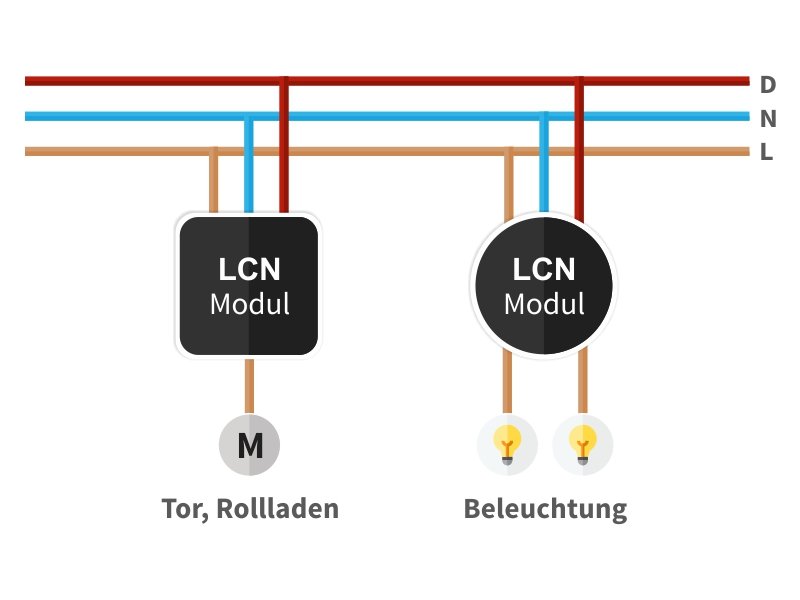
Periphery
Peripheral components are connected to the corresponding P, T or I port on the bus module.
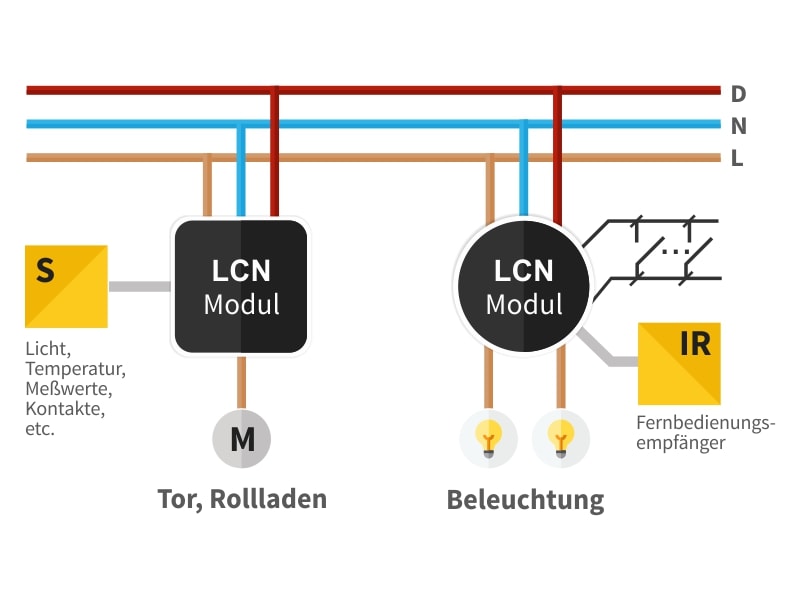
More details about the installation
Intelligence for the top-hat rail and flush-mounting
LCN modules are available as flush-mounted or DIN rail modules for distributed or centralized use. The flush-mounted modules can be installed in flush-mounted boxes behind pushbuttons, sockets and switches or in junction boxes. Unlike other bus systems, LCN modules include various sensor inputs and actuator outputs simultaneously as standard. This allows any sensors and actuators to be addressed directly on site.
Microprocessor
All settings are permanently stored in the configuration memory of the intelligent LCN modules and are retained even in the event of a power failure. With the LCN parameterization software, the current status of all LCN modules in a plant can be read out at any time, analyzed and, if necessary, changed and further processed. To protect an LCN system or an LCN module from unauthorized access, each module can be assigned a password.
The LCN-PRO programming software
The installer’s tool is called LCN-PRO. With this software all LCN systems can be parameterized comfortably, no matter with which equipment and in which order of magnitude. Freely available updates always ensure full compatibility with the latest module generation. LCN-PRO can parameterize any number of projects. Individual projects can be saved in a template pool and reused in any LCN system at any time by “drag & drop”. A double data backup (on PC and in the system) as well as a recognition of existing assembly versions on the part of the software prevents possible errors.
The LCN-PRO has two modes of operation: online and offline. In offline mode, the system is preconfigured on the PC and stored in a database. This way, the entire parameterization can be transferred to the project at a later time. If the LCN-PRO is connected to the system in online mode, it can read out and change the current parameterization of the system. In addition to general parameterization, the software offers functions for checking and logging the LCN system. LCN-PRO is available in twelve languages and offers a free update service.
Worldwide building visualization with LCN-GVS
LCN-GVS is a visualization system that can control and manage almost any number of LCN installations and buildings worldwide. Since LCN-GVS is purely browser-based, any Internet-enabled PC, smartphone, etc. can access all buildings worldwide. With comprehensive user account control, rights are assigned for access to individual consumers, rooms, buildings or groupings. The connections of the LCN-GVS visualization system to globally distributed properties are established via encrypted connections.
LCN-GVS comprehensively monitors all connected LCN systems and graphically displays the states. For monitoring purposes, there is an event annunciator available that links any processes, measured values, calendars, etc. and triggers actions and messages.
The LCN-GVS sends mails, SMS (time-controlled according to duty schedule) and push messages directly to cell phones.
The integrated timer can combine multiple calendars and trigger linked actions. The comprehensive access control combines all five LCN access methods (IR transmitter, transponder, universal transponder, active transponder (> 4 m), fingerprint sensor). It enables time-dependent, personal profiles for each access. All access attempts are logged and can be checked even years later.
Key features of LCN-GVS are the detailed user administration, the powerful editor, which is deliberately reminiscent of familiar Windows applications, and the easy-to-understand menu navigation, which facilitates intuitive use of the visualization system. Setup wizards support the administrator in his work, so that even extensive configurations can be completed quickly.
LCN-VISU: Simple and comprehensive
The Internet makes it possible: control your building easily and comprehensively – with smartphone, tablet or laptop. The intuitive interface offers you the choice between table and tile display.
Due to the international standard openHAB, the LCN-VISU is open for all systems – ALEXA, HUE and SONOS are directly supported. In addition, the LCN-VISU serves as a coupler via the Internet to LCN-PRO, LCN-GVS (if additionally installed) and to the LCN-PCK protocol, via which
Third-party programs can control the LCN bus – protected by password, of course. The built-in ModBus coupling allows reading meters, controlling air conditioning and heating systems and controlling wallboxes for charging cars with solar power.
Visit an LCN training course!
You are convinced of LCN, then attend an LCN intensive course. This allows you to get to know LCN better and participate in a 1-day training course. Or order the LCN-SKO sample and training case.
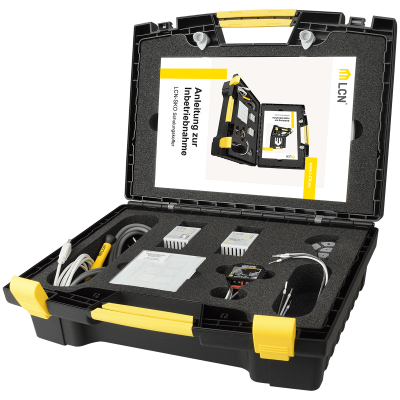
Ask us about the installation of LCN!
Call us! Our experts are there for you! Phone number: 05066 99 88 55

